COLLECTING IN THE UNITED KINGDOM
By James Bancroft
Reprinted from "Crown Jewels of the Wire", December 2006, page 43
It all started in 1991 when I was on a school camping trip. Crews were
replacing the brown insulators on the power lines with grey ones, and they had
dumped all the brown ones in a pile behind some bushes where they would come
later on and take them away. There were multiparts, suspensions and
transformers. It seemed they were renewing everything apart from the poles.
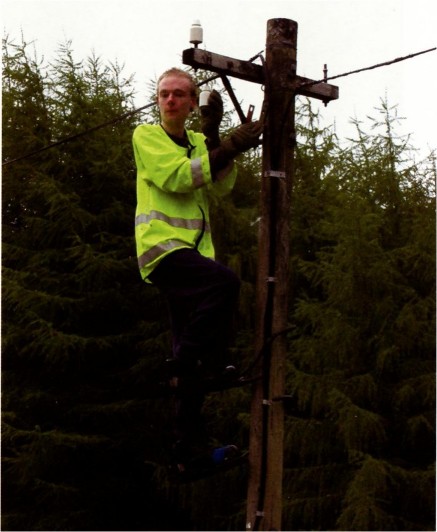
Because I only had small amounts of baggage I decided to take just one
multipart and searched for the one in the best condition. I still have this
insulator today and this is what got me interested in them.
That was it until the following year when I was staying at relatives. Just a
short distance from their house was a railway line that has been converted into
a footpath. To gain access you have to pass through the remains of a station
which is basically just the platforms as all the buildings had gone. On one of
the platforms was a very short pole with a U-1938 known as a pothead insulator.
I was surprised to see it there and more surprised it was intact as it was a
sitting target for stone throwers. I knew I had to take it but it refused to
unscrew so I had to saw through the crossarm. When I got home I left it in
vinegar for weeks until it finally eat through the rust.
My interest in insulators quietly died away until 2001 when I was driving
along a remote road in the Scottish Highlands where there was about a 5 mile run
of poles with no wires attached. This was before I had any climbing gear so the
only way I could get the insulators was to saw the poles. Later that day I
bought a saw from a hardware store and returned to the poles at 10pm just as it
was going dark. The poles were set back from the road on a mountainside which is
used by sheep for grazing. When I was happy that it was dark enough I started
sawing the pole. It took ages but when enough of the wood had disappeared I
gently pushed the pole and it started to make a creaking sound before it crashed
to the ground - Timber!
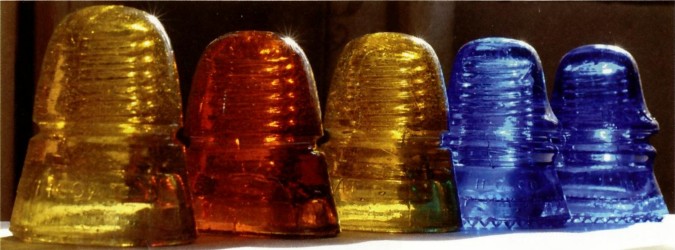
Above and bottom right: Brightly colored insulators from James' collection.
When sawing I made sure it fell with the crossarms upwards so the insulators
didn't get damaged. Each pole had three crossarms and four insulators on each
arm. The ironwork was dated 1966 so they were only 35 years old and they were
free of rust so I decided to saw the pole again just below the crossarms. I was
able to recreate a pole at home. I made a few more visits to that location later
in the year and took many more insulators. Most of them were double grooved
U-1549's but there were also some the ever common Cordeaux pattern U-1540 and
U-1542 which are the most abundant in the UK. These poles were the first true
starting point of my insulator collection.
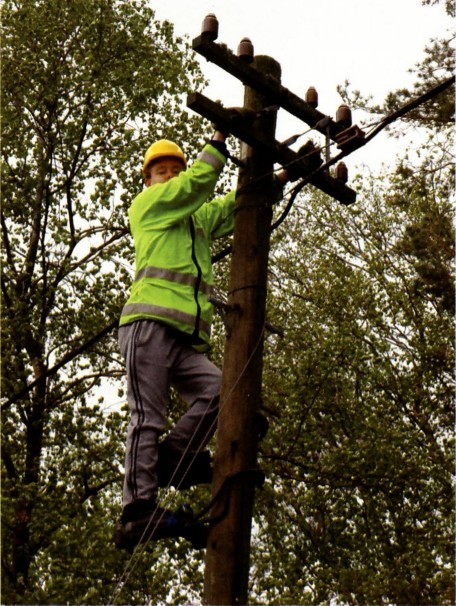
The next year or so my collection slowly grew as I came across poles
with no wires that I could saw down. The main problem I had was no way of
climbing the poles and being as virtually all poles had a multicore wire
attached to the pole with unused insulators above it become frustrating that I
couldn't retrieve them.
The break came in 2002 when I contacted a Swedish collector on ICON called
Fredrik Höjefält. He has a set of climbing irons that he uses on hunts and I
got him to send them to someone in a foreign country that he hardly knows, I'm not sure too many people would do that. I got my father to make a
copy of them and sent Fredrik's back. Thanks to Fredrik's climbers I was able to
take virtually any insulator I came across. The next few years saw my collection
mushroom in size as I took every insulator I could lay my hands on. It was a
hunting frenzy. I initially hunted at night under cover of darkness but I soon
realized it would look less suspicious during the day and I bought reflective
safety vest and a hard hat to imitate a workman. It worked and no one takes any
notice of you. Even police cars and telecom vans go past without their drivers
taking a second glance.
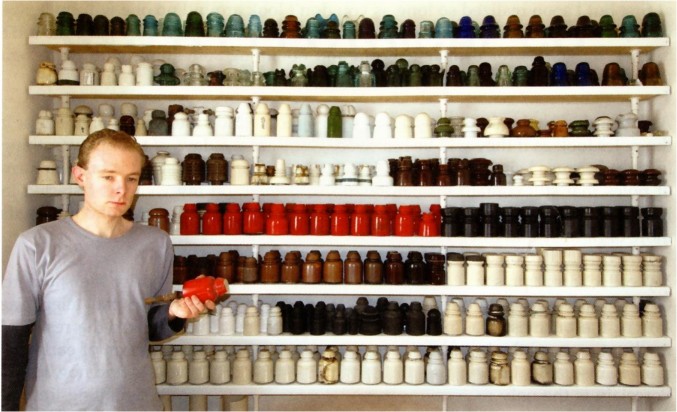
All this hunting started to create problems as I had too many insulators and
not enough space to display them. During these early years of pole climbing I
took every insulator that was there and this resulted in tons of U-1542's and
other common patterns. I soon changed my tactics to go after the rarer types.
Sometimes a run of poles may contain a handful of the less common types and for
some reason they tend to be near houses. I was a bit skeptical of climbing near
houses at first but I soon realized so long as you don't look around no one will
challenge you. Just a few weeks before writing this article a fellow collector
gave me a BT helmet. BT stands for British Telecom and obtaining something with
their logo makes the public even less suspicious of my presence.
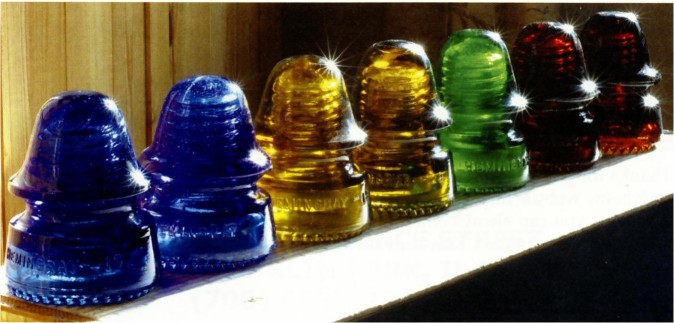
As it stands now I only climb poles if there is something interesting on them
or if the poles look as if they will be removed. Gone are the days of taking
everything in sight because I simply don't have the room. What I do instead is
take pictures of poles that still contain insulators and post them on my
website. I started in January 2005 and now I have nearly 300 pictures of
telephone poles and hundreds more of railway and foreign poles.
My collection at present contains around 500 pieces. The majority are
standard GPO - General Post Office, the nationalized company before the
telephone side of the business was privatized and became BT. All these are the
result of my hunting over the last few years. I also have a sizeable collection
of early UK railway insulators I obtained mainly from Ebay as they are hard to
find nowadays. Porcelain is the only material used on telephone and railway signaling
lines in the UK so this started my interest in foreign insulators made of glass.
Having attended shows over the last couple of years in the USA and Canada I've
started to accumulate an amount of North American glass. Initially I took
anything that was available which meant common types like CD154 and CD155's
where I got most of them by hunting railway tracks. Lately I've concentrated on
the brighter colours like amber and cobalts. I particularly like coloured
signals and amber beehives. One type I don't yet have is an EC&M. I hope to
purchase one in the not too distant future. As for my favourite insulator? That
would be a tough call. The amber HGCO beehives would be high up on the list, so
would the red Bullers.
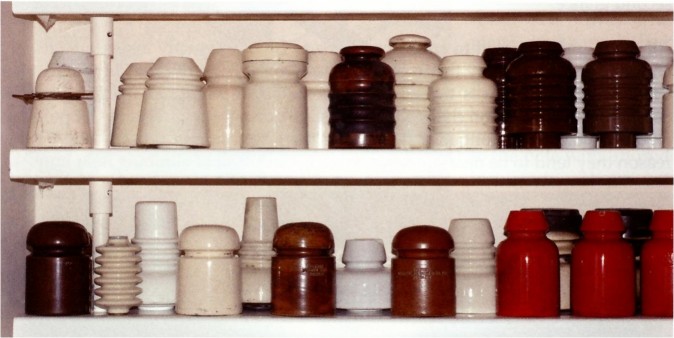
Thanks for your interest in how I got started in collecting insulators. Do
take a look at my website http://www.myinsulators.com/ukinsulators. If you have
any questions you can always email me and don't forget to let me know if you are
taking a holiday in the UK as I am always ready to go insulator hunting.
James Bancroft
| 